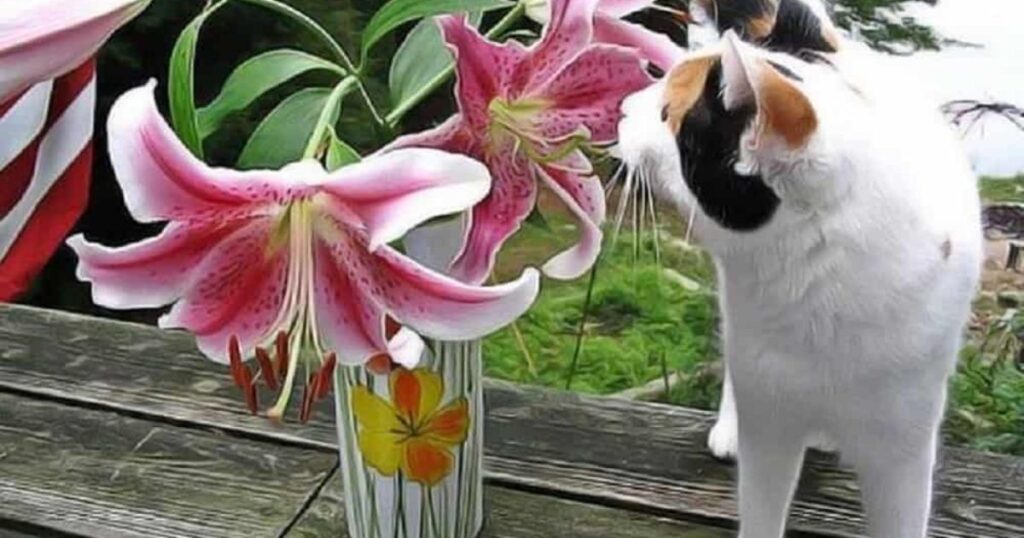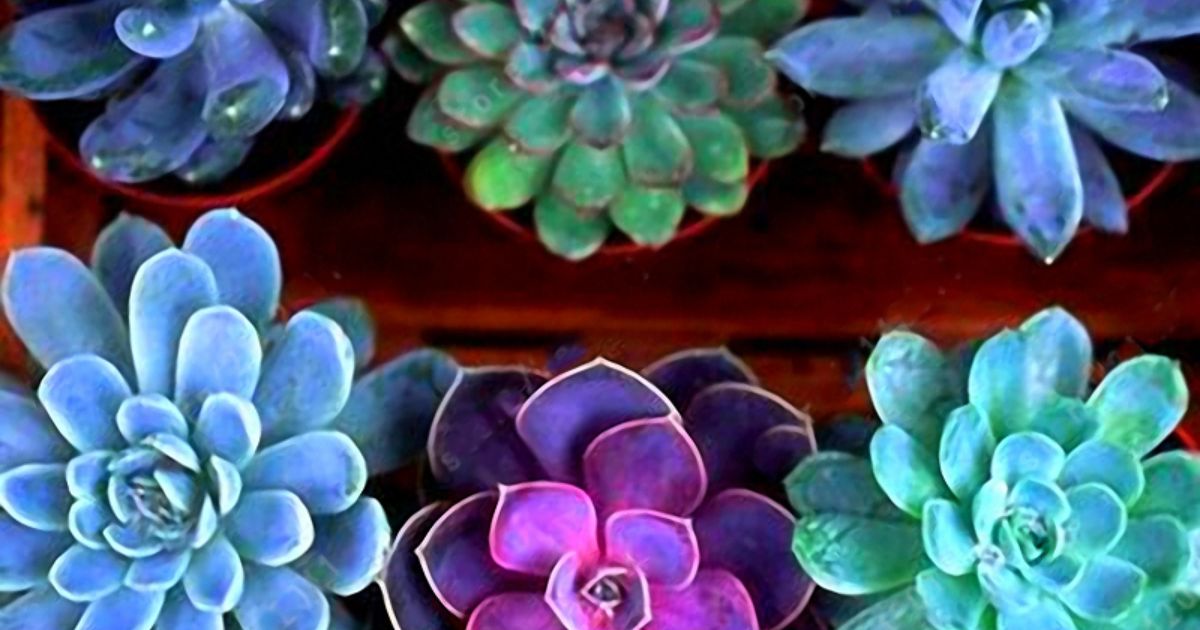Succulents are plants known for their fleshy leaves and water-retaining ability. While some varieties are edible for humans, caution is necessary, as not all succulents are safe to eat. Popular edible succulents include aloe vera and certain types of cacti.
Curious about spicing up your culinary adventures? Ever wondered,”Are succulents edible for humans? Dive into the fascinating world of succulent edibles from aloe vera to select cacti, these plants offer unique flavors and potential health benefits
Succulents, such as aloe vera and certain cacti, can be edible for humans. It’s crucial to identify the specific species, as not all succulents are safe to eat. Always ensure they are free from harmful chemicals before incorporating them into your diet.
Are Succulent Plants Poisonous To Humans?
Succulent plants, with their vibrant and diverse forms, are generally not considered poisonous to humans. It’s important to exercise caution, as some varieties may contain mild toxins or irritants. Most commonly cultivated succulents, like aloe vera and echeveria, are safe to handle and grow indoors without posing harm.
While many succulents are non-toxic, it’s crucial to research specific species and avoid ingesting unknown varieties, especially for bearded dragons. If you’re considering incorporating succulents into their habitat, be mindful of what succulents are safe for bearded dragons. Some succulents, particularly those in the Euphorbia genus, can produce a milky sap that may cause skin irritation or be toxic if ingested by these reptiles. Always err on the side of caution by properly identifying succulents and keeping them out of reach of pets and children.
Are Succulent Plants Poisonous To Cats Or Dogs?

Succulent plants, with their unique shapes and vibrant colors, are popular among plant enthusiasts. However, it’s essential to be cautious as some succulents can be toxic to cats or dogs. Certain varieties, like jade plants and aloe vera, contain substances that, if ingested by pets, may lead to gastrointestinal issues or more severe health problems.
To ensure the safety of your furry friends, it’s crucial to research the specific succulent species you have and keep them out of reach. If you suspect your pet has ingested a toxic succulent, seek immediate veterinary attention. Responsible ownership and awareness of the potential hazards can help create a pet-friendly environment while enjoying the beauty of succulent plants.
Symptoms Of Poisoning In Pets And Humans
Recognizing symptoms of poisoning in pets is vital for their well-being. Watch out for signs like vomiting, lethargy, drooling, and difficulty breathing. If you notice behavioral changes or unusual symptoms, seek immediate veterinary attention, as prompt action can make a significant difference in treating poisoning in pets.
Similarly, identifying symptoms of poisoning in humans is crucial for timely intervention. Common signs include nausea, dizziness, abdominal pain, and difficulty breathing. If you suspect poisoning, contact emergency services or a poison control center immediately. Swift recognition and appropriate action are essential for the best possible outcome in cases of poisoning.
Safety Measures To Take When Handling Poisonous Succulents
When dealing with poisonous succulents, it’s paramount to prioritize safety. Always wear protective gloves to shield your skin from potential irritants or toxins present in certain succulent species. Additionally, make sure to handle them in a well-ventilated area to minimize the risk of inhaling any harmful substances released by the plants.
Furthermore, familiarize yourself with the specific toxic properties of the succulents in your care. Accurate identification is key to implementing appropriate safety measures. If you have children or pets, place these poisonous succulents out of their reach to prevent accidental ingestion or contact. Taking these precautionary steps ensures a secure and enjoyable experience with your succulent collection.
Are Echeveria Poisonous Humans?
Echeveria, popular for their striking rosette shapes and vibrant colors, are generally not considered highly toxic to humans. While these succulents may not pose a significant threat, it’s essential to exercise caution. Ingesting large quantities can still lead to mild digestive discomfort, so it’s advisable to avoid consuming Echeveria deliberately.
Though Echeveria are not typically poisonous, pet owners should be cautious, as these plants may cause mild irritation or discomfort if ingested by animals. While they are not as toxic as some other houseplants, it’s always best to keep Echeveria out of reach to ensure the safety of both curious pets and small children.
What Customers Are Saying
Curious about our products? See what customers are saying! From glowing testimonials to rave reviews, our customers appreciate the quality and uniqueness of our offerings. Join the chorus of satisfied voices as they share their positive experiences with our products.
Discover firsthand why our customers can’t stop talking about their favorite finds. Their words reflect not just satisfaction but excitement about the value, service, and joy our products bring. Dive into the testimonials to get a glimpse of the delightful experiences our customers have had, and consider becoming a part of our happy customer community.
In Search Of The Last Untamed Food
In the quest for the last untamed food, explorers embark on a culinary adventure, seeking the untouched and unaltered flavors that nature provides. This pursuit involves venturing beyond the familiar aisles of supermarkets, diving into remote landscapes to discover indigenous ingredients that have escaped mass cultivation and processing.
As enthusiasts strive to uncover the last untamed food sources, they celebrate the richness of biodiversity and the unique tastes that have evolved in harmony with local ecosystems. This culinary journey not only reconnects us with nature but also highlights the importance of preserving traditional, untamed foods for future generations to enjoy.
| Key Points | Description |
| Variety of Edible Succulents | Aloe vera and select cacti are edible, offering unique flavors and potential health benefits. |
| Caution in Consumption | Not all succulents are safe for humans; careful identification and ensuring chemical-free sources are crucial. |
| Culinary and Medicinal Uses | Edible succulents like aloe vera find applications in cuisine and alternative medicine, showcasing versatility. |
| Importance of Identification | Proper species identification is essential before consumption, ensuring a responsible approach to enjoying succulents. |
| Balance of Aesthetic and Practical | Succulents provide both visual charm and culinary potential, emphasizing the need for mindful exploration and knowledge. |
Field Guide To The Plants Of The Falkland Islands
The “Field Guide to the Plants of the Falkland Islands” is an invaluable resource for nature enthusiasts exploring the unique flora of this remote archipelago. This comprehensive guide provides detailed descriptions and vibrant illustrations of the diverse plant life that thrives in the Falklands’ distinct climate and landscapes.
With its user-friendly format, the guide aids both beginners and seasoned botanists in identifying the various plants scattered across the Falkland Islands. From the iconic tussock grasslands to the rugged coastal areas, each section of the guide provides insights into the ecological significance and cultural relevance of these plants.
Wetland Plants Of The Townsville-Burdekin Flood Plain
The Townsville-Burdekin Flood Plain is adorned with a rich variety of wetland plants, contributing to the area’s unique ecosystem. These wetland plants play a vital role in maintaining the ecological balance of the region.
These wetland plants have adapted to the dynamic conditions of the floodplain, demonstrating resilience in the face of seasonal changes. Their roots provide stability to the soil, preventing erosion, while their leaves and stems serve as essential components in nutrient cycling.
FAQ’s
Which wetland plants thrive in the Townsville-Burdekin Flood Plain?
Various wetland plants, including water lilies and bullrushes, flourish in the diverse ecosystem of the Townsville-Burdekin Flood Plain.
How do wetland plants contribute to the ecological balance of the floodplain?
Wetland plants play a crucial role by providing habitat, aiding in water purification, and assisting in flood control, contributing to the overall ecological harmony of the region.
What adaptations do these plants showcase in response to the floodplain’s dynamic conditions?
The wetland plants of the Townsville-Burdekin Flood Plain exhibit adaptability, demonstrating resilience to seasonal changes and contributing to soil stability and nutrient cycling.
How do the roots of wetland plants help prevent soil erosion in the floodplain?
The intricate root systems of these plants provide stability to the soil, acting as a natural barrier against erosion caused by the dynamic water levels in the floodplain.
Why are wetland plants in the Townsville-Burdekin Flood Plain considered ecologically significant?
The wetland plants contribute to the region’s ecological significance by fostering a delicate balance between the environment and nature, creating a visually stunning landscape with environmental benefits.
Conclusion
In conclusion, the question. Are succulents edible for humans? unveils a nuanced exploration into the world of these unique plants. Succulents, with their fleshy leaves and water-retaining properties, offer not only aesthetic appeal but also culinary and medicinal potential. While some varieties like aloe vera and certain cacti are indeed edible and find application in various cuisines and alternative medicine, it is paramount to exercise caution.
Identifying specific species and ensuring their safety for consumption is crucial, as not all succulents are suitable for human consumption. The allure of incorporating these plants into our diets must be accompanied by a responsible approach, verifying their origin and ensuring they are free from harmful chemicals. The versatility of succulents extends beyond visual charm,










